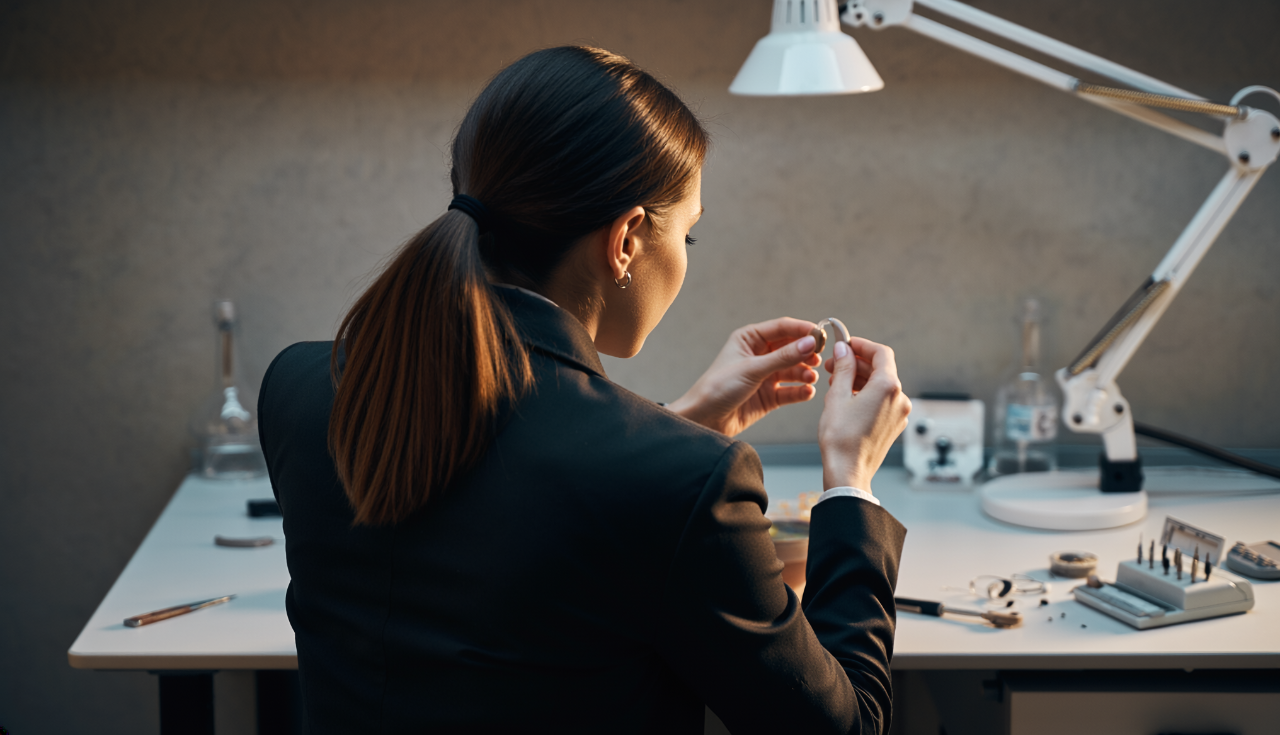Ear Candling: claimed benefits, best practices & myths

Ear candles, also known as ear cones or thermal-auricular devices, are hollow tubes typically made from fabric soaked in beeswax, paraffin, or a combination of various natural ingredients. These candles are designed to be inserted into the ear canal and lit at the opposite end, creating a gentle vacuum effect that is believed to draw out earwax and promote relaxation.
The primary purpose of ear candles is twofold: earwax removal and relaxation. Advocates of ear candling claim that the heat and suction created by the burning candle help to soften and loosen earwax, making it easier to remove. Additionally, the process is said to induce a calming and soothing effect, making it popular among individuals seeking stress relief and a sense of overall well-being.
Ear candles types available in the market
The market offers a wide range of ear candles, each varying in shape, size, and additional ingredients. Understanding the different types available can help individuals choose the most suitable option for their specific needs.
- Traditional Straight Ear Candles: Traditional straight ear candles are the most commonly used type. They have a cylindrical shape and are typically around 10-12 inches long. These candles are designed to fit comfortably into the ear canal, allowing for effective ear candling therapy.
- Conical Ear Candles: Conical ear candles have a tapered shape, resembling a cone. They are often preferred by individuals with smaller ear canals or those seeking a more precise application. Conical candles provide a focused airflow during the ear candling process, targeting specific areas within the ear.
- Herbal Ear Candles: Herbal ear candles are infused with various natural ingredients, such as essential oils, herbs, or plant extracts. These additional ingredients are believed to enhance the therapeutic benefits of ear candling. For example, lavender-infused candles may promote relaxation, while eucalyptus-infused candles may provide a refreshing sensation.


1. Removal of excess earwax
Proponents of ear candling believe that the warm air and suction created by the candle can help soften and draw out excess earwax from the ear canal. However, it is important to note that scientific evidence supporting this claim is limited, and ear candling should not be considered a substitute for professional earwax removal methods.
2. Improving hearing
It is claimed that ear candling can improve hearing by removing blockages or obstructions in the ear canal. However, there is a lack of scientific evidence to support this claim, and individuals experiencing hearing issues should consult a healthcare professional for proper evaluation and treatment.
3. Relieving rar pressure
Some individuals report experiencing relief from ear pressure or discomfort after ear candling. This may be attributed to the warming and gentle suction effect, which could help alleviate congestion or fluid buildup in the ear.
4. Promoting relaxation
Many people find the process of ear candling to be relaxing and soothing. The warm ambiance created by the burning candle, combined with the gentle crackling sound, can contribute to a calming experience.
Preparing for ear candling
Gathering supplies: ear candles and lighter
To ensure a safe and effective ear candling experience, it is crucial to gather the following essential supplies:
- Ear candles: Choose high-quality, all-natural ear candles made from beeswax or soy wax. These candles are specifically designed for ear candling and have a hollow center that allows for gentle suction and smoke release.
- Protective barrier: Use a protective barrier, such as a paper plate or aluminum foil, to shield the hair and face from any stray ash or debris during the candling process.
- Lighter or matches: A reliable lighter or matches are necessary to ignite the ear candle safely.
Creating a calm and comfortable environment
The environment in which ear candling takes place plays a crucial role in the overall experience. Here are some key considerations to ensure a calm and comfortable atmosphere:
- Find a quiet space: Choose a room or area where external noise is minimized. This will help create a serene environment, allowing the individual to fully relax during the ear candling process.
- Dim the lights: Soft, ambient lighting can contribute to a soothing atmosphere. Consider using candles or low-intensity lamps to create a warm and tranquil ambiance.
- Use relaxing music: Playing gentle, instrumental music can further enhance the calming effect. Select tracks that promote relaxation and tranquility, such as nature sounds or classical compositions.
Importance of proper ear hygiene and cleanliness
Maintaining proper hygiene and cleanliness is paramount when engaging in any therapeutic practice, including ear candling. Here's why it is essential and how to ensure hygiene throughout the process:
- Washing hands: Before handling any supplies or equipment, thoroughly wash hands with soap and warm water. This step helps prevent the transfer of bacteria or other contaminants to the ear canal.
- Cleaning the ear and surrounding area: Prior to ear candling, gently clean the outer ear and surrounding area with a mild, fragrance-free cleanser. This ensures that the ear is free from excess wax, dirt, or debris, allowing for a more effective candling experience.
- Post-candling hygiene: After the ear candling session, it is crucial to clean the ear and surrounding area once again. Use a clean, damp cloth to gently wipe away any residue or ash that may have accumulated during the process.
By adhering to these hygiene practices, individuals can minimize the risk of infection or irritation and maximize the benefits of ear candling.


How to use ear candles? Step-by-step guide
1. Inspecting the ear candle for defects
2. Placing a protective barrier
3. Positioning the ear candle in the ear canal
4. Ensuring a secure and comfortable fit
5. Maintaining proper hand positioning and control
6. Safely lighting the ear candle
To safely light the ear candle, follow these steps:
- Find a calm and quiet area free from any flammable materials.
- Place a protective plate or dish beneath the ear candle to catch any ash or debris that may fall.
- Hold the unlit end of the ear candle and gently tilt it at a slight angle to create better airflow.
- Use a lighter or a matchstick to ignite the opposite end of the ear candle.
- Allow the flame to burn for a few seconds until it reaches a steady and controlled burn.
- Blow out the flame gently, ensuring that no sparks or embers remain.
7. Monitoring the burning ear candle
8. Addressing discomfort or pain
9. Safely extinguishing the ear candle
10. Removing the ear candle from the ear canal


Preventative measures to take prior to ear candling
Consult a healthcare professional
Seeking professional advice before attempting ear candling is of utmost importance, particularly for individuals with pre-existing ear conditions. Consulting a healthcare professional ensures that any potential risks or contraindications are properly evaluated and addressed.
Who should avoid using ear candles?
There are certain conditions and situations in which ear candling should be avoided altogether to prevent potential harm or exacerbation of existing ear problems. Individuals who fall into any of the following categories should refrain from using ear candles:
- Ear Infections: Ear candling can aggravate existing ear infections, leading to further complications and potential spread of the infection.
- Inflammation: If the ear canal is already inflamed or irritated, ear candling can worsen the condition and cause further discomfort.
- Allergies to Candle Materials: Some individuals may have allergies or sensitivities to the materials used in ear candles, such as beeswax or essential oils. Direct contact with these substances can trigger allergic reactions.
- Perforated Eardrum: Using ear candles when there is a perforation in the eardrum can be extremely dangerous. The heat and pressure created during the process can further damage the eardrum and potentially lead to hearing loss.
- Recent Ear Surgery: Individuals who have undergone recent ear surgery should avoid ear candling until they have fully healed and received clearance from their healthcare provider.
Ear candling risks and results
It is essential to understand the potential risks and side effects associated with ear candling, as they can have serious consequences on one's hearing and overall well-being. These risks include:
- Burns: The open flame of the ear candle can cause burns to the skin, hair, or even the delicate tissues of the ear canal. Severe burns may require medical attention and can lead to scarring.
- Injuries: Mishandling of the ear candle or improper insertion can result in injuries to the ear, including punctures or scratches to the ear canal or eardrum.
- Blockage of the Ear Canal: The melted wax from the ear candle can accumulate and block the ear canal, leading to temporary hearing loss, discomfort, or even infection. Removing the wax may require medical intervention.
- Delayed Diagnosis or Treatment: Relying on ear candling as a remedy for underlying ear conditions can delay the proper diagnosis and treatment of more serious issues. This delay may worsen the condition and lead to complications.
Ear candling Frequently Asked Questions
What are common misconceptions about ear candling?
Ear candling has garnered attention as a potential natural solution for various ear ailments. As its popularity grows, it's crucial to differentiate between the grounded facts and prevalent myths. Some common misconceptions include:
- Toxin Removal: While proponents believe the heat from ear candles draws out impurities, there's no scientific evidence to back this. The body already possesses systems like the liver and lymphatic system for detoxification.
- Health Benefits: Claims suggest ear candling can alleviate conditions such as sinus congestion and tinnitus and even enhance hearing. However, these assertions lack scientific support. Always consider seeking advice from medical professionals before pursuing such treatments.
Do ear candles work?
Do ear candles help clogged ears?
What are ear candles made of?
Ear candles are cylindrical-shaped devices commonly used for ear candling therapy. They are typically made from a combination of natural materials, including beeswax or paraffin, and a fabric or paper cone. The composition of ear candles is crucial as it directly affects their effectiveness and safety.
- Beeswax Ear Candles: Beeswax ear candles are crafted from the wax produced by bees. This type of candle is highly regarded for its natural and sustainable properties. Beeswax is known for its ability to burn slowly and emit a subtle honey-like aroma, creating a soothing and relaxing atmosphere during the ear candling process.
- Paraffin Ear Candles: Paraffin ear candles are made from a petroleum-based wax. They are a more affordable alternative to beeswax candles but may lack some of the natural benefits associated with beeswax. Paraffin candles tend to burn faster and may produce a stronger scent during the ear candling session.
Is ear candling an ancient remedy or modern myth?
With you on your journey to better hearing.
It's time to finally treat your hearing loss. Sign up for a free consultation with a licensed hearing care professional today to determine if you have hearing loss. It’s the start of your journey towards better hearing.
EarPros benefits:
- It's 100% risk free
- Best partner with more than 1.000 stores






